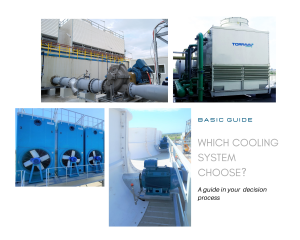BASIC GUIDE TO CHOOSE A COOLING SYSTEM
A guide to essential questions to consider when choosing a refrigeration system.
Is this the first time you face the cooling of your industrial process? How about having a general frame of reference to help and guide you in the choice process?
These guidelines will help you choose the best cooling technology for the specific needs of your plant.
1. What fluid do you need to cool: water, gas, other fluid?
Definitely the starting point is the type of fluid to be cooled: water, cooling fluid, steam?
Generally speaking, different fluids require different cooling systems; in other words, different systems are preferred depending on the type of fluid to be cooled. For example, if you have to cool process water directly, you can choose an open-circuit evaporative cooling tower, built with the right materials for the purpose. This is particularly true when you have to deal with partially dirty or aggressive water.
However, condensation of refrigerant gas can best be achieved by means of an evaporative or adiabatic condenser.
2. What type of plant is it?: Food, metal treatment, energy…
The context of the building is another element that conditions the choice like the spaces available to install the refrigeration system.
The visual impact of the cooling installation or acoustic issues are also important and should not be neglected when choosing the cooling system. Today there are technical measures to reduce the noise levels of both, evaporative and adiabatic coolers.
3. Combined with what other industrial machinery? Chiller, compressor…
This is another element that directs the choice towards the most suitable type of equipment in each case: the type of cooling to be achieved. For example, direct or indirect cooling, in this case through a heat exchanger.
It is also necessary to consider how “delicate” the plant is, both in terms of management and eventual maintenance interventions: an industrial plant must guarantee continuity of production and medium-long maintenance intervals. On the other hand, an air-conditioning or seasonal operating system is often subject to scheduled checks and controls during periods of inactivity.
In this sense, an open or closed circuit evaporative cooling tower or (in the case of refrigerant gases) an evaporative condenser, may be more “robust” systems than an air cooled or adiabatic chiller. The latter may be more subject to fouling in the area of the finned coils when installed in an industrial plant.
4. What is the main focus? Performance, savings, water footprint …
An “economical” cooling system may not be the most efficient. It is necessary to make a careful overall and preventive assessment of both, the initial investment and the return on investment in terms of direct benefits (system efficiency) and indirect benefits (reduced need for maintenance). And in this sense, it is better to choose with perspective for a more efficient and suitable system for your needs, rather than being solely conditioned by the cost of the equipment.
In addition to the thermal power to be dissipated, the decisive element is the temperature to which you want to cool the fluid or condense the gas: there is no point in going too low if it is not strictly necessary. In fact, many processes only need to dissipate higher or lower amounts of heat, without having to reach lower limits that would be stressful for the process.
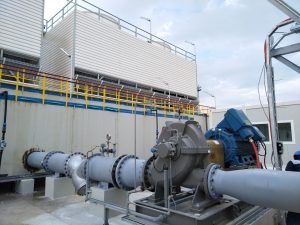
5. What latitude are you at: wet bulb and dry bulb?
The thermo-hygrometric conditions of the installation site should decisively guide the choice of the best cooling system.
– A geographical area with low temperatures, but high humidity, will determine the choice of air systems.
– Areas with high temperatures and average humidity will direct the choice towards evaporative or at least adiabatic systems.
Obviously, this is not an absolute rule: what has been said above applies to the lower temperature limit of the fluid or gas required and to the size of the system. However, an appropriate choice in this respect makes it easier to achieve efficiency and to optimise both installation and management costs.
6. What outlet temperature do you want (apart from latitude)?
As in the previous point, the thermohygrometric characteristics provide an accurate reference regarding the lower limit that the cooling water can reach, or at least which system to use to reach that limit.
Some processes such as moulding of plastic materials generally require quite low cooling water temperatures: to the point of requiring cooling units possibly combined with evaporative or dry systems in cold seasons. These are therefore quite complex systems, which are able to combine different cooling situations and offer maximum efficiency in the different annual climatic conditions.
7. What precautions should you take into account?
We are talking about
– factors specific to the system itself: aggressive water or water that needs to be kept clean
– or, of the installation area: ice, silence for nearby civil buildings …
Other important elements of choice are
– the use of the plant where the cooling system will be installed:
civil, commercial or industrial.
– the size of the plant.
Civil or commercial users of small and medium thermal power (up to 1 MW) are preferably served by air or adiabatic systems.
The remaining medium-high power industrial and/or thermal users are generally reliant on evaporative cooling systems: they are more compact, economical and efficient.
The specific operating conditions of the system are another determining factor: continuous operation, for example, means that the equipment must operate smoothly in opposite climatic conditions. On the other hand, an installation in an urban context, or in any case sensitive to the “noise” aspect, must be able to guarantee very low noise levels in compliance with current regulations.
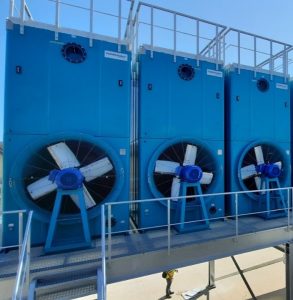
8.How big is your plant and future cooling system?
The physical dimensions of the required chiller must be considered not only to assess whether the space you plan to dedicate is sufficient, but also to limit the visual impacts that can sometimes represent a handicap.
Of course, the other factors listed above have priority in guiding the choice of the best cooling technology.
9. What logistical aspects to consider?
Logistics also plays an important role in the choice of the best solution. Whether or not water is available is decisive. Also, the presence of a previously constructed system (as in the case of revamping or retrofitting) can influence the choice in order to optimise construction costs.
The term “logistics” also includes the choice of the physical positioning of the cooling system: some installations are carried out on the roofs of both industrial and commercial buildings due to space problems: this involves bringing the electrical and hydraulic power supplies to a height.
10. What services will you need in the future: total water management, monitoring, spare parts?
The purchase of a “cooling system” requires adequate pre-sales advice and the guarantee of a reactive and efficient after-sales service.
At present, progress is being made in providing the customer with complete services that include technical rooms in which, in addition to the cooling system itself, the circulation pumps, the electrical panel, the water treatment system and the hot and cold water collection system are inserted. tanks, so that the customer only has to bring the hot water and chilled water pipes to the system offered.
Subsequently, the management of the entire cooling “kit” is entrusted to the panel that manages the system and all of this can be equipped with a connection for remote control.
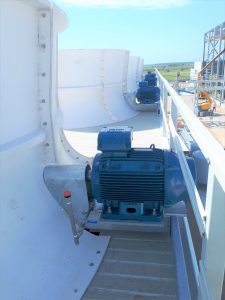
11. What level of maintenance is required?
The after-sales maintenance service is just as important as the technical-commercial consultancy phase, if not more so, as it will determine the useful life of our cooling tower.
. Each equipment must be equipped with a control and scheduled maintenance plan. However, the best solution is to have a Company that includes as an activity the Maintenance and Inspection Service.
12. Does the supplier you choose have good references?
References within such a specific sector are important because they endorse the Supplier’s experience in the application: any related problems have already been addressed and solved in previous installations. Almost 60 years of designing, advising and working on the improvement of evaporative cooling towers at national and international level are references to be taken into account.
13. The rest of the questions are asked by a Refrigeration Consultant!
This is a basic guide to the questions one should ask before investing in refrigeration, however, they are better answered by a refrigeration consultant.
Consultancy is a fundamental aspect for Torraval. It guarantees technical support during the choice phase and is a good indicator of knowledge in a specific sector: this is a distinctive element.
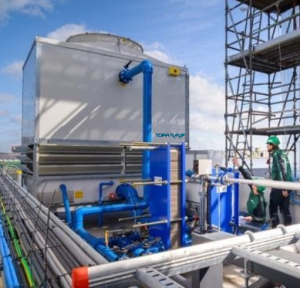
CONTACT YOUR TORRAVAL CONSULTANT, FILLING IN THE CONTACT FORM OR CALLING US AT +34 944 52 00
